Tahiti’s Most Legendary Wave Scares Seasoned Pros. Now It’s the Site for the 2024 Olympic Surfing Competition.
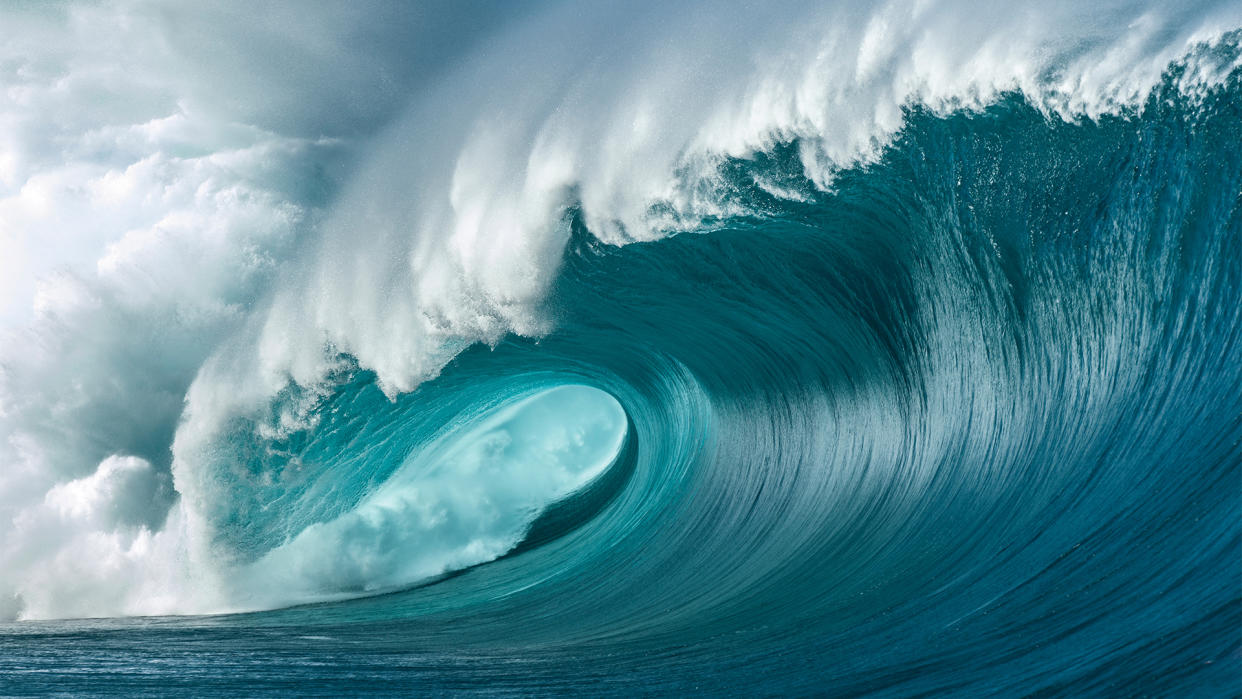
- Oops!Something went wrong.Please try again later.
- Oops!Something went wrong.Please try again later.
It’s Day Two of the 2023 Tahiti Pro Surf Competition. I’m perched on the roof of a VIP boat 400 feet from Teahupo’o, one of the world’s most dangerous waves. Surf icon Kelly Slater has just been swallowed by a heaving wall of turquoise water. I’m so close to the action that when he’s finally spit out from the ride, my face gets misted in ocean spray. Below me, Australian Jack Robinson, who will go on to win the event, sits on the edge of the boat performing breathing exercises ahead of his heat. Around me, a flotilla of kayaks, Jet Skis, surfboards, and small vessels bobs in the channel, acting as a floating stadium for fans.
For many of the competitors—and the 1,400-odd residents of the wave’s namesake village—this year’s contest is a dress rehearsal for an event with a far larger global profile in a few months’ time. While many of the world’s top athletes will travel to France in July for the 2024 Paris Olympic Games, the most talented surfers will head here, to the southwest corner of Tahiti island’s small peninsula, Tahiti Iti, to vie for gold at Teahupo’o in just the second surf competition in Olympic history.
More from Robb Report
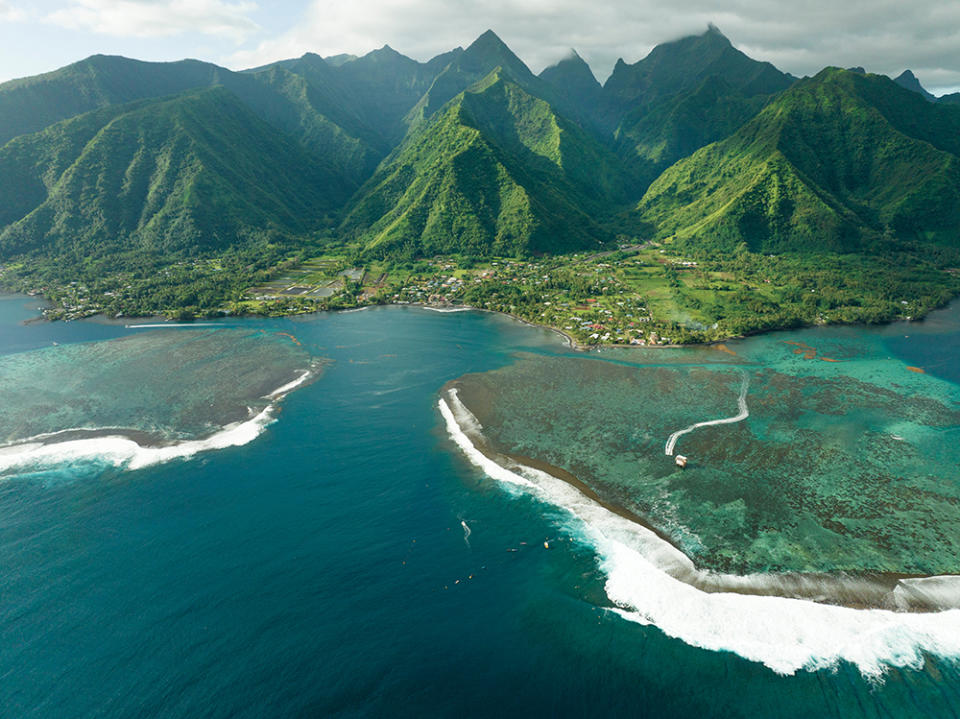
Olympic officials could have chosen a site off the coast of France, such as the surf towns of Biarritz or Hossegor, but historically, Mother Nature brings more sizable waves to Tahiti in the summer months. Plus, surfing has deep cultural ties to the region. The sport originated in Polynesia and dates as far back as the 12th century; it was practiced by Polynesian royalty. Teahupo’o is also a world-class wave that challenges the mental and physical prowess of even the most experienced competitors. The high risk of surfing this particular spot guarantees thrills that officials anticipate will boost viewership.
Located in the gin-clear waters of the South Pacific with a background of mountains that appear to be draped in jade-green crushed velvet, Teahupo’o (pronounced TAY-a-hoo-poh-oh) is one of the sport’s most infamous swells. (Its name loosely—and cheerily—translates to “place of skulls.”) According to Memoirs of Marau Taaroa, Last Queen of Tahiti, printed in 1893, the first person to surf it was actually a woman from the island of Raiatea, in the 19th century. Not until the 1980s did anyone dare attempt it again, with the first competition hosted in the late 1990s. Former pro turned filmmaker Chris Malloy has called it “the wave that has changed surfing forever.”
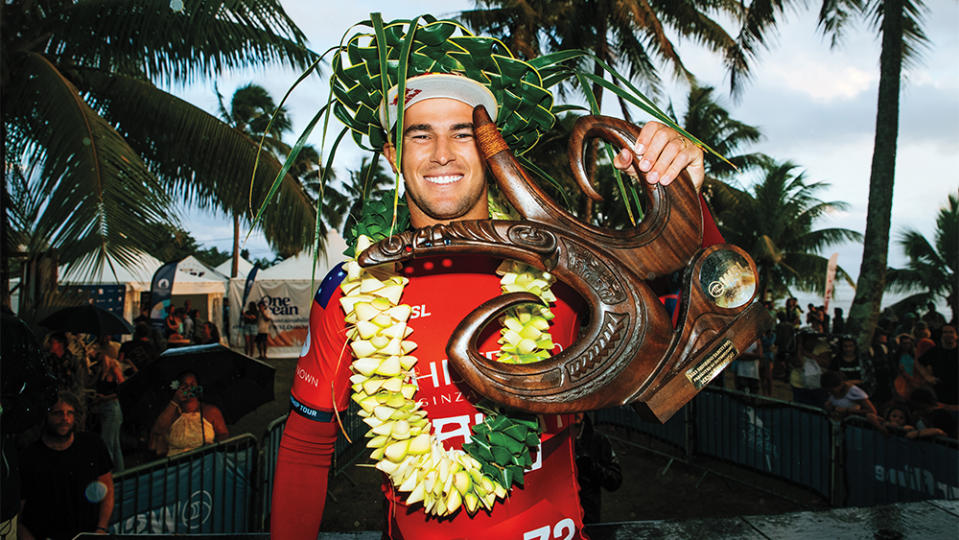
In the right conditions, Teahupo’o can tower upwards of 20 feet. That may sound small compared to the monster-size Jaws in Maui or Nazaré in Portugal—which can climb as high as 80 feet—but it’s not the height that makes Chopes, as the wave is lovingly called, so special. It’s the weight. When surfers describe a wave as heavy, they’re referring to its combination of a thick lip (the powerful section that starts to curl over) and the amount of water surging behind it.
Like most of the surf breaks found throughout French Polynesia, Teahupo’o is a reef break, meaning the water spills over the surface of knife-sharp coral. Chopes is unique because just over 160 feet beyond the reef, the ocean drops more than 50 feet. As swells come toward the shore, the transition from deep water causes them to jack up over the coral before quickly crashing down with tremendous force.
“The reef evolved perfectly in order to absorb the wave’s energy in the shortest distance possible to create this natural wonder,” surf superstar Laird Hamilton tells Robb Report. “It’s a wave that stands straight up and creates a huge barrel. It’s one of the greatest waves on Earth.” In 2000, Hamilton rewrote surfing history when he rode what has been dubbed the Millennium Wave here. Up until then, Teahupo’o was considered too perilous to attempt when it reached a certain size. Hamilton, a pioneer of tow surfing, had a Jet Ski pull him into what is still considered one of the heaviest waves ever ridden. Surfer magazine published a memorable cover of him getting barreled with just the words “oh my god… ” because the feat was so dangerous.
In places, the reef lurks just 20 inches beneath the water’s surface, and the lip can act like a liquid guillotine if it clamps down before a surfer exits the hollow tube of the wave, known as the barrel. Had Hamilton wiped out, he wouldn’t have had an escape route.
All of your senses are heightened here. It’s not just the wave—it’s the island. Everything looks five-dimensional… The raw beauty is overwhelming to take in when you first arrive— Former world surf champion C. J. Hobgood
Teahupo’o village has a water-safety patrol that watches over athletes during contests. Still, a handful of surfers have lost their lives here, and many go home with serious battle wounds. I’m an avid amateur surfer and live on Maui part-time to take advantage of Hawaii’s waves, but even on a gentle day, I wouldn’t attempt Teahupo’o.
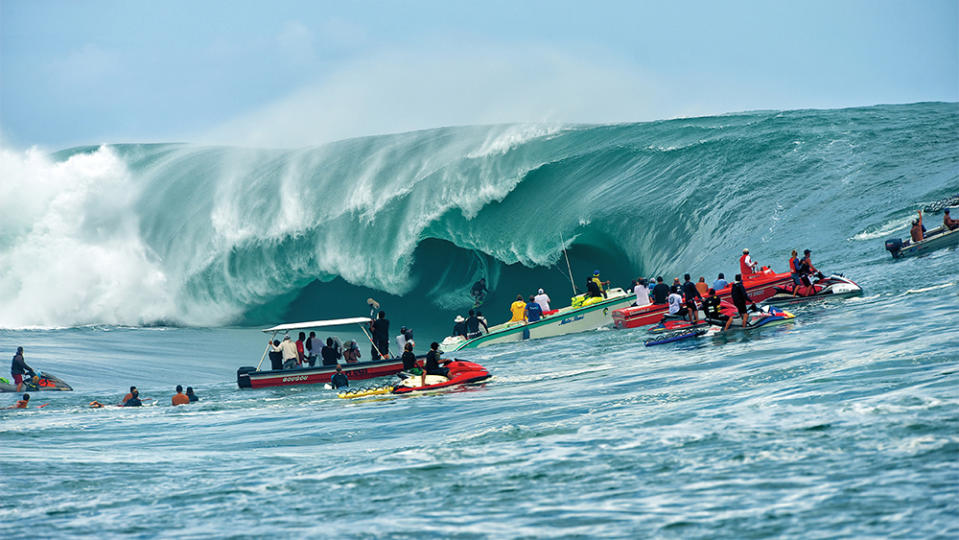
On my boat, Caitlin Simmers, an 18-year-old up-and-comer from California, straps on a helmet ahead of her heat for extra protection. She tells me the scars on her legs are a souvenir of the reef’s wrath. (She would go on to finish second in the women’s competition and clinch an Olympic berth.) Even the pros approach this place with trepidation. The woman who bested Simmers, Caroline Marks, an American who’ll also be competing in the Summer Games, calls Teahupo’o “one of the most beautiful yet scary machine-like waves I’ve ever surfed.” Tahitians Kauli Vaast and Vahine Fierro, both of whom will be representing France on the Olympic stage next summer, are wild-card entries at the Tahiti Pro, but their familiarity with these waters is apparent. Vaast lives just a stone’s throw away and first surfed Chopes at the age of 8. Fierro understatedly describes it as “a wave with a lot of consequences,” admitting to Robb Report, “I was 15 years old when I first surfed there, but I got so scared that I didn’t surf it for two years.” Time in the ocean, though, has helped her understand—and harness—the power of Teahupo’o. She even outperforms the reigning Olympic champ, Hawaiian Carissa Moore.
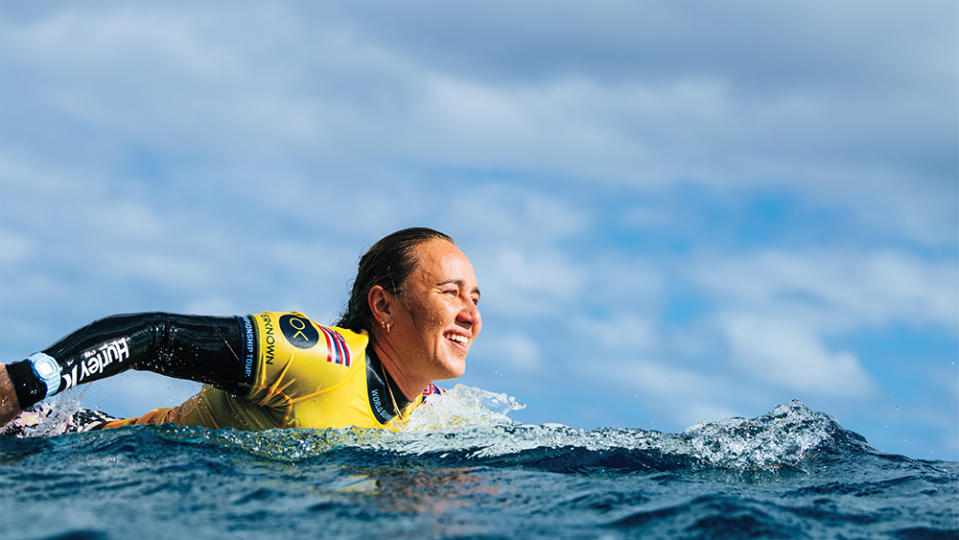
Unless you surf, Tahiti Iti probably isn’t on your radar. Starting from the largest town of Taravoa, the south-coast road ends at the village of Teahupo’o, hence its nickname, the End of the Road. The community, just 1,600 feet from the wave, is the antithesis of the glitz and glamour of Paris or even nearby Bora Bora, the island the majority of American tourists visit when they travel to French Polynesia. This is a slice of tropical paradise that has somehow evaded development. To reach the contest each day, I park at the end of the road, then walk over a one-lane bridge and follow a sandy path that passes local homes.
“All of your senses are heightened here,” former world surf champion C. J. Hobgood tells me when I run into him at the event. “It’s not just the wave—it’s the island. Everything looks five-dimensional. Mountains seem stacked on mountains and glow a vivid green. You turn to the right and these bluer-than-blue waves are breaking. Then a rainbow might appear in the sky. The raw beauty is overwhelming to take in when you first arrive.”
Surfers talk of feeling the mana, a Polynesian word for spiritual energy, here. It may sound woo-woo, but I undoubtedly feel something when I arrive after a 90-minute drive southwest from the hotel-lined harbor of Tahiti Nui, the island’s larger, more developed area. Tahiti Iti’s empty beaches and waterfall-riddled lush interiors remind me of a quieter, more vibrant version of Hana, a little corner of Maui with just one hotel, a handful of restaurants, and miles of untamed nature. In an era of over-tourism, this kind of purity comes with a trade-off: You won’t find five-star hotels or celebrity-chef restaurants on Tahiti Iti. In fact, it doesn’t have any hotels at all—and won’t be opening any ahead of the Games. Locals have been adamant that Olympic infrastructure remains minimal. The proposed construction of a three-story judging tower directly on the reef at Teahupo’o has been a major concern among residents and environmental groups. The one Olympic improvement locals welcome is a new bridge that will connect to the beach in front of Chopes.
I check into Villa Mitirapa, newly built in the rural community of Afaahiti, a 25-minute drive from Teahupo’o. Giant carved wooden doors lead to an open-air living room, a plunge pool, and views of the lagoon, and every evening a chef drops by with a delicious preparation of the catch of the day. In the village of Teahupo’o, you’ll find family-owned guesthouses such as Vanira Lodge, a collection of three bungalows tucked up in Te Pari (“the cliffs” in Tahitian), as well as A Hi’o To Mou’a, a B and B run by the proprietor of hiking outfit Heeuri Explorer.
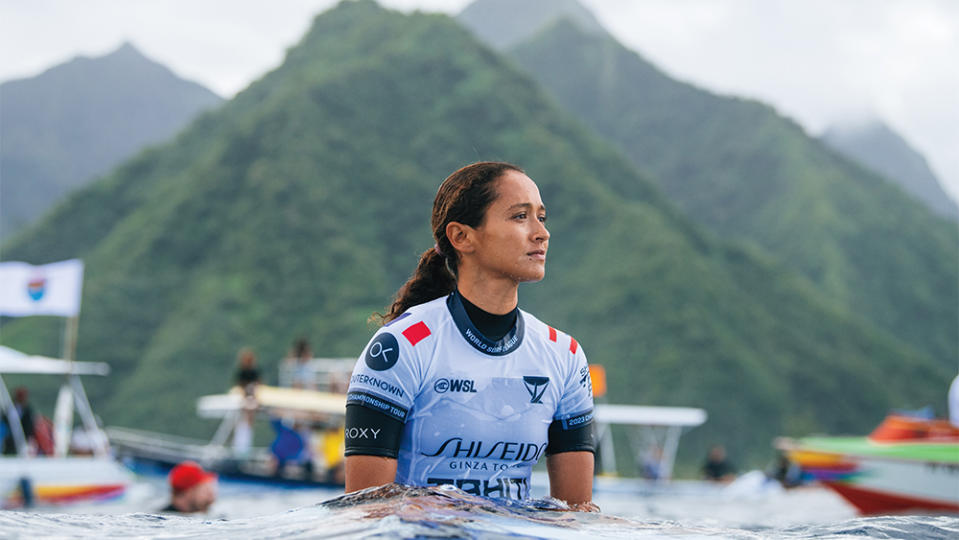
Pro surfers are typically hosted by the same local families year after year. (During the Olympics, athletes will be housed on a ship anchored in a sandy area offshore to avoid damaging the seabed.) Hobgood tells me he made visits to his “adopted Tahitian family” for nearly two decades. For the past five years, he has come to Teahupo’o to help coach Moore and now stays with her adopted family. “They take us on hikes you’d otherwise never know how to access and have rich stories about the place,” he says. “And everything they prepare for us at meals, from the passion-fruit jam to the chili sauce, is homemade.”
The next best thing to being “adopted” by a Tahitian family is hiring Raimana van Bastolaer as your guide. For a first-time visitor, Tahiti Iti can be far harder to access than other islands, which is perhaps why so few people explore the peninsula. You need a local to reveal where to go, and van Bastolaer makes you feel like an insider.
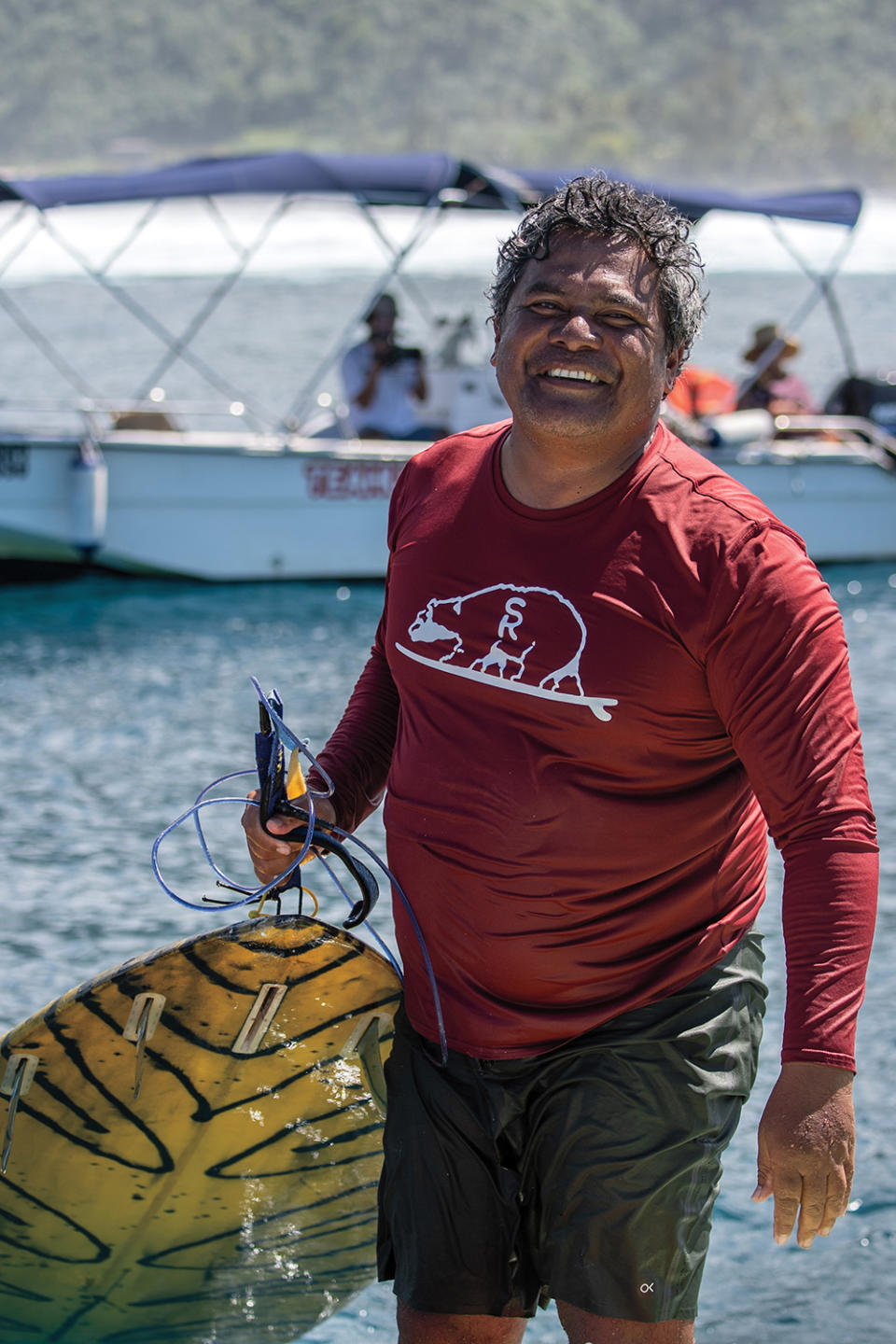
Born and raised in the capital of Papeete, he was one of the first locals to surf Chopes, and over the years, his intricate knowledge of the wave has earned him the nickname the Godfather of Teahupo’o. He was out in the channel with Hamilton the day the American had his historic ride, and John John Florence and Kelly Slater are among the surfers who stay with him when they’re in town. Van Bastolaer even did a stint as a part-time coach at Surf Ranch, Slater’s central-California wave park. Between his stocky build, daunting athleticism, and nonstop pursuit of a good time, he’s like the Rob Gronkowski of surfing. Everyone wants to be around him. Now 48, van Bastolaer has become the go-to guide for visitors ranging from Julia Roberts, Margot Robbie, and Jason Momoa to Mark Zuckerberg and Prince Harry. “I get to yell at princes and CEOs,” he jokes. “I’m out in the water with them telling them when to pop up and paddle. And they love it.”
In places, the reef lurks just 20 inches beneath the water’s surface, and the lip can act like a liquid guillotine if it clamps down before a surfer exits the hollow tube of the wave.
Tahiti’s unofficial ambassador lives and breathes surfing. Through his company, Raimana World, he takes just one or two guests at a time on private curated surf tours throughout French Polynesia’s two central archipelagoes: the Society Islands (which are home to Tahiti) and the Tuamotus; he plans to add Fiji soon. Some of his clients base themselves on their own yachts or charter one through Pelorus. The yacht specialist’s Tahiti portfolio includes the 254-foot La Datcha, which has two helipads, a submersible, and a spa.
Other clients he directs to exclusive properties, such as Motu Nao Nao, a new 62-acre private-island resort in the cerulean lagoon of Raiatea with just three enormous villas crafted from coral, wood, and shells. A roving bar bike delivers custom cocktails to guests as they explore the island, and the French chef, inspired by Asian and North African cuisine, prides himself on never repeating a dish, no matter how long guests stay.
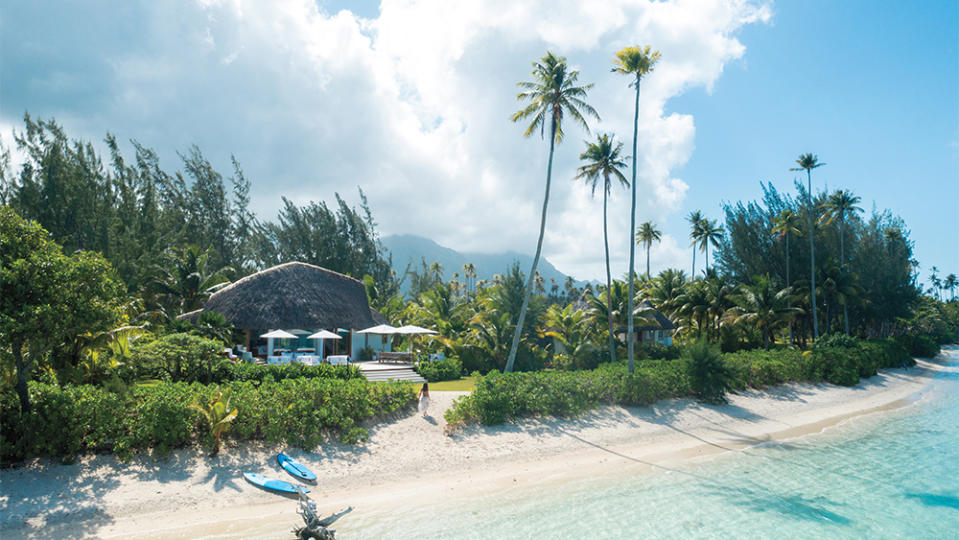
Van Bastolaer gets only one or two clients a year experienced enough to be coached into a barrel at Teahupo’o. “Most just want to get close to the wave to feel its energy and hear it roar,” he says. “That’s enough to give you an adrenaline rush.” Locals are incredibly protective of their surf spots, and van Bastolaer stays away from popular breaks. “Out of respect, I don’t take clients out if there are more than a few people in the water. Luckily, I have access to toys that get us away from the crowds.” He island-hops by helicopter, yacht, or jet boat, then transports guests to surf breaks via high-speed RIB (rigid inflatable boat) or Jet Ski. Most days average two to three hours of surfing, and he sprinkles in other activities such as snorkeling, whale watching (July to November), and barbecues at his house.
Papara, the beautiful black-sand beach where van Bastolaer honed his skills, 45 minutes from Teahupo’o, will be turned into a fan viewing zone with jumbo screens during the Olympics. Papara is one of the most forgiving surf breaks in Tahiti, and I head here to longboard. La Plage de Maui, a simple restaurant with sandy floors, plastic chairs, and lagoon vistas, becomes my daily après-surf spot. Located in West Taiarapu, 40 minutes east of Papara, with nothing but coastal road and local homes in between, this humble spot sits next to Maui Beach, one of the only white-sand beaches on the whole island. This stretch may be Tahiti Iti’s best-kept secret.
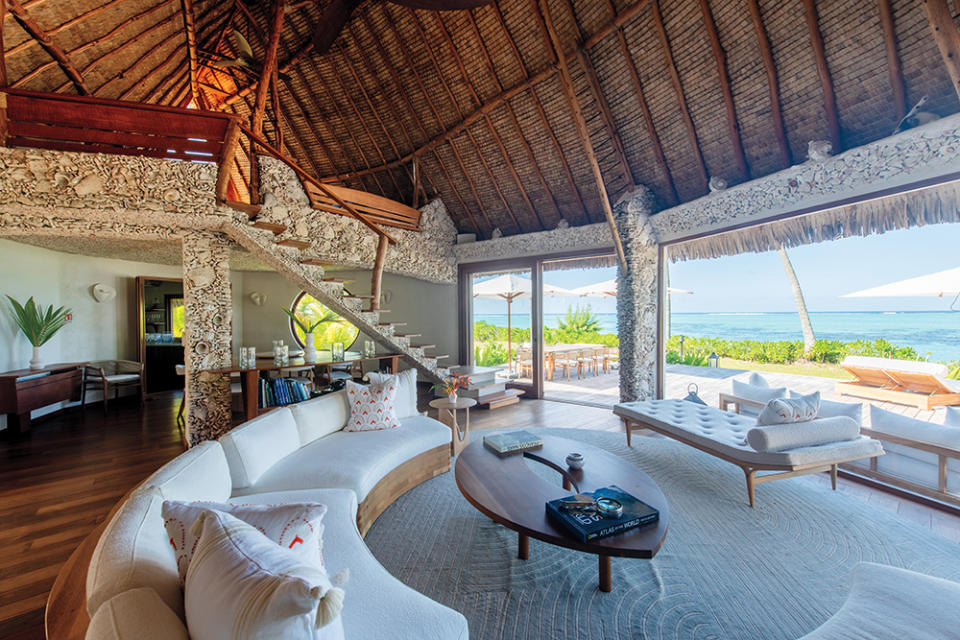
After a barefoot walk along the shore, I don’t bother to put my shoes back on before heading into the restaurant, where servers proudly sport Tahiti Pro T-shirts and posters of pros hang on the walls. At a waterfront table, I spot rainbow-hued parrotfish and Moorish idol in the glassy lagoon. I’m pretty sure I could live on a diet of local Hinano beer and poisson cru, Tahiti’s national dish of raw fish marinated in lime juice and coconut milk. My final day, I ask my waitress if she’s concerned the Olympics might overexpose this laid-back, oft-forgotten enclave. She just laughs in reply. On the drive back to my villa, I remember what van Bastolaer told me when we were introduced a year ago: Tahiti Iti’s specialness is lost on those seeking overwater bungalows or nightlife. It’s a place you can’t know in a day. The island reveals itself to you slowly. And even when van Bastolaer is your host, he won’t give all its secrets away.
If you go: The Olympic surfing competition will be held July 27 to 30. Air Tahiti Nui flies from Los Angeles to Papeete.
Sign up for Robb Report's Newsletter. For the latest news, follow us on Facebook, Twitter, and Instagram.

